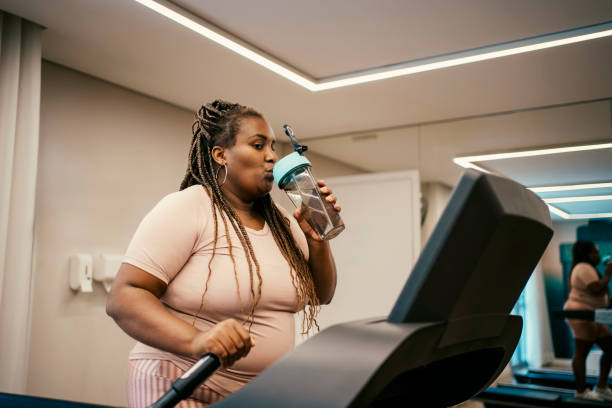(BlackFitness101.com) As a fitness trainer, I’ve seen firsthand the transformative power of yoga in managing chronic conditions like diabetes. Yoga, an ancient practice that combines physical postures, breathing techniques, and meditation, has been scientifically proven to help control blood sugar levels, improve insulin sensitivity, and enhance overall well-being. In this comprehensive guide, we’ll explore seven specific yoga poses that can help you manage diabetes effectively. We’ll delve into the benefits of each pose, provide detailed instructions on how to perform them, and discuss how incorporating yoga into your daily routine can lead to better diabetes control and a healthier lifestyle.
Understanding Diabetes
Before we dive into the yoga poses, it’s essential to understand the basics of diabetes and how it affects the body. Diabetes is a chronic condition characterized by high blood sugar levels, either because the body doesn’t produce enough insulin (Type 1 diabetes) or because it can’t effectively use the insulin it produces (Type 2 diabetes). High blood sugar levels can lead to various complications, including heart disease, nerve damage, kidney problems, and vision issues.
Managing diabetes involves a combination of medication, diet, and lifestyle changes. Regular physical activity, including yoga, plays a crucial role in controlling blood sugar levels and improving overall health.

Benefits of Yoga for Diabetes
Yoga offers numerous benefits for people with diabetes, including:
- Improved Insulin Sensitivity: Regular yoga practice can enhance insulin sensitivity, allowing the body to use glucose more effectively.
- Reduced Stress Levels: Stress can negatively impact blood sugar levels. Yoga helps reduce stress through relaxation techniques and mindfulness, leading to better diabetes management.
- Enhanced Circulation: Yoga poses promote blood circulation, which is crucial for preventing diabetes-related complications.
- Weight Management: Maintaining a healthy weight is vital for diabetes control. Yoga can aid in weight loss and management by improving metabolism and promoting a healthy lifestyle.
- Improved Cardiovascular Health: Many yoga poses and breathing exercises enhance cardiovascular health, reducing the risk of heart disease, a common complication of diabetes.
7 Yoga Poses to Control Diabetes
1. Vrikshasana (Tree Pose)
Benefits:
- Improves balance and stability
- Enhances focus and concentration
- Strengthens the legs and core muscles
- Promotes blood circulation
Instructions:
- Stand straight with your feet together and arms by your side.
- Shift your weight onto your left leg and bend your right knee.
- Place the sole of your right foot on the inner thigh of your left leg.
- Bring your hands together in a prayer position in front of your chest.
- Focus on a point in front of you to maintain balance.
- Hold the pose for 30 seconds to 1 minute, then switch sides.
2. Bhujangasana (Cobra Pose)
Benefits:
- Strengthens the spine and back muscles
- Stimulates abdominal organs
- Improves digestion and reduces constipation
- Enhances blood flow and circulation
Instructions:
- Lie face down on the mat with your legs extended and feet together.
- Place your hands under your shoulders, keeping your elbows close to your body.
- Inhale and slowly lift your chest off the ground, straightening your arms.
- Keep your shoulders relaxed and gaze upward.
- Hold the pose for 15-30 seconds while breathing deeply.
- Exhale and gently lower your chest back to the mat.
3. Dhanurasana (Bow Pose)
Benefits:
- Strengthens the back and abdominal muscles
- Stimulates the pancreas and improves insulin production
- Enhances digestion and relieves bloating
- Reduces stress and fatigue
Instructions:
- Lie face down on the mat with your arms by your sides and legs extended.
- Bend your knees and bring your heels close to your buttocks.
- Reach back and grasp your ankles with your hands.
- Inhale and lift your chest and thighs off the ground, pulling your legs up.
- Hold the pose for 15-30 seconds while breathing deeply.
- Exhale and gently release your ankles, lowering your chest and thighs back to the mat.
4. Setu Bandhasana (Bridge Pose)
Benefits:
- Strengthens the back, glutes, and hamstrings
- Stimulates the thyroid gland and regulates metabolism
- Improves digestion and relieves constipation
- Reduces anxiety and stress
Instructions:
- Lie on your back with your knees bent and feet hip-width apart.
- Place your arms by your sides, palms facing down.
- Inhale and lift your hips off the ground, pressing your feet and arms into the mat.
- Clasp your hands under your back and lift your chest.
- Hold the pose for 30 seconds to 1 minute while breathing deeply.
- Exhale and gently lower your hips back to the mat.
5. Paschimottanasana (Seated Forward Bend)
Benefits:
- Stretches the spine, hamstrings, and lower back
- Stimulates the liver and kidneys
- Improves digestion and relieves constipation
- Reduces anxiety and calms the mind
Instructions:
- Sit on the mat with your legs extended straight in front of you.
- Inhale and raise your arms overhead, lengthening your spine.
- Exhale and bend forward from your hips, reaching for your feet or ankles.
- Keep your spine straight and relax your neck and shoulders.
- Hold the pose for 1-2 minutes while breathing deeply.
- Inhale and slowly return to a seated position.
6. Ardha Matsyendrasana (Half Lord of the Fishes Pose)
Benefits:
- Improves spinal mobility and flexibility
- Stimulates the digestive organs and improves digestion
- Regulates blood sugar levels
- Relieves stress and fatigue
Instructions:
- Sit on the mat with your legs extended.
- Bend your right knee and place your right foot on the outside of your left thigh.
- Bend your left knee and bring your left foot near your right hip.
- Inhale and lengthen your spine.
- Exhale and twist your torso to the right, placing your left elbow on the outside of your right knee.
- Hold the pose for 30 seconds to 1 minute, then switch sides.
7. Shavasana (Corpse Pose)
Benefits:
- Promotes relaxation and reduces stress
- Lowers blood pressure and heart rate
- Enhances overall well-being and mental clarity
- Allows the body to absorb the benefits of the yoga practice
Instructions:
- Lie flat on your back with your legs extended and arms by your sides.
- Close your eyes and focus on your breath.
- Relax each part of your body, starting from your toes and moving up to your head.
- Stay in the pose for 5-10 minutes, allowing your body to fully relax.
- To come out of the pose, gently roll to your side and slowly sit up.
Incorporating Yoga into Your Daily Routine
To reap the full benefits of yoga for diabetes management, it’s essential to practice regularly. Here are some tips to help you incorporate yoga into your daily routine:
- Set a Schedule: Dedicate a specific time each day for your yoga practice. Consistency is key to seeing improvements in your blood sugar levels and overall health.
- Start Slowly: If you’re new to yoga, start with shorter sessions and gradually increase the duration as you become more comfortable with the poses.
- Listen to Your Body: Pay attention to how your body feels during and after each pose. If you experience any pain or discomfort, modify the pose or skip it altogether.
- Combine with Other Exercises: Yoga can be complemented with other forms of exercise, such as walking, swimming, or strength training, to enhance your fitness routine.
- Practice Mindfulness: Yoga is not just about physical postures; it’s also about mindfulness and meditation. Incorporate breathing exercises and meditation into your practice to reduce stress and improve mental clarity.
Yoga is a powerful tool for managing diabetes and improving overall health. By incorporating these seven yoga poses into your daily routine, you can enhance insulin sensitivity, reduce stress, improve circulation, and maintain a healthy weight. As a fitness trainer, I encourage you to embrace yoga as a holistic approach to diabetes management and experience the transformative benefits it offers.
Remember, consistency is key. Make yoga a part of your daily life, and you’ll be well on your way to better diabetes control and a healthier, more balanced lifestyle. Namaste!
Staff Writer; Leroy Smith
Questions? Feel free to email me at; LSmith@BlackFitness101.com.












Leave a Reply